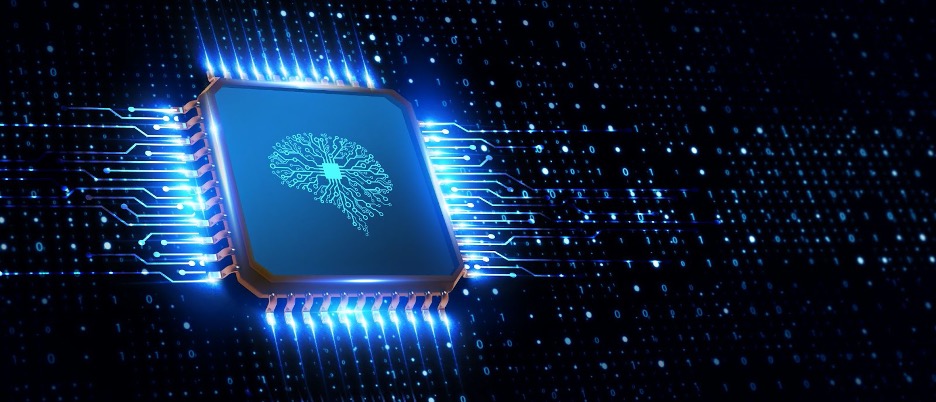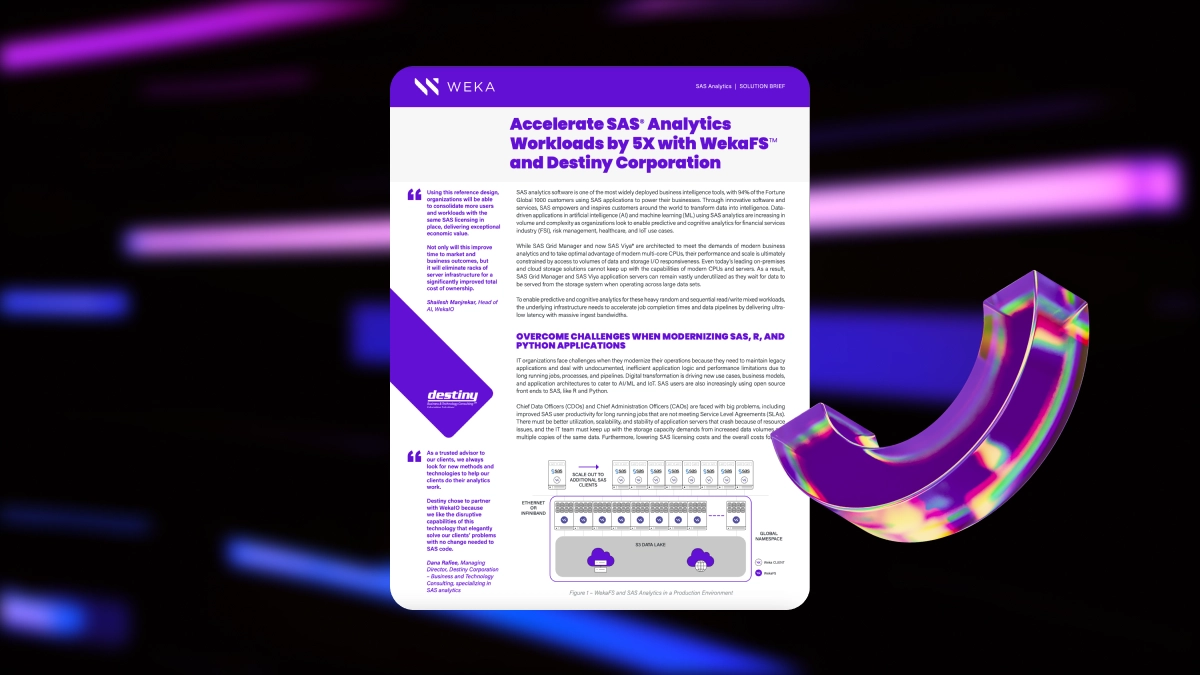Deep Learning vs. Machine Learning (Differences Explained)

What are the differences between machine learning and deep learning? We will explain each of them, their differences, and their use cases.
What is the difference between machine learning and deep learning? Machine learning is a subset of Artificial Intelligence that refers to computers learning from data without being explicitly programmed. Deep learning is a subset of machine learning that creates a structure of algorithms to make brain-like decisions.
What Is Machine Learning?
As the name suggests, machine learning is the science of creating algorithms that can learn without being directed by humans. In this context, “learning” emphasizes building algorithms that can ingest data, make sense of it within a domain of expertise, and use that data to make independent decisions.
Machine learning encompasses several approaches to teaching algorithms, but nearly all involve some combination of large data sets and (usually structured data, depending on the algorithm) different types of constraints, such as in a simulation.
Because there are several theories and approaches to machine learning, however, there are also several types of machine learning:
- Supervised Learning: The most common form of learning, supervised machine learning is all about giving data to learning algorithms in a way to provide context and feedback for learning. This data, called “training data,” gives the algorithm both the inputs and the desired outputs so that it learns how to make decisions from one to reach the other.
- Unsupervised Learning: Unlike supervised algorithms, unsupervised learning data sets only include inputs, and the algorithm must learn simply from those inputs. Machine learning algorithms don’t compare results against test data, but rather must find patterns and commonalities between data points to determine the next steps to take.
- Reinforcement Learning: Reinforcement learning emphasizes learning agents, or programs acting within environments–a good example is a computer-controlled player in a video game. In this paradigm, the agent learns through cumulative reward based on different actions.
While there are other, more esoteric forms of machine learning, these three paradigms represent a large portion of the field.
Machine learning isn’t a new phenomenon. It has been a major part of research into AI since the mid-20th century. In the early days of machine learning algorithms focused on linear approaches to programming and thinking. That is, programmers building machine learning algorithms using increasingly complex programs built on “If-Then-Else” logic. This structure found much success in areas like the development of Expert Systems but hit a significant wall when it came to dynamic and responsive thinking machines. It was when engineers began conceptualizing and building brain-like structures known as “neural networks” that machine learning algorithms leaped forward.
Neural networks are meant to mimic how we think the brain works. Instead of linear programs powered by complex logic in code, a neural network works through a series of nodes that can accept input and provide an output based on that input, usually through a system of weights and values tied to specific actions and outcomes. The result is that, instead of having a straightforward program running through steps, you have in a neural network a collection of unique but connected responsive “neurons” whose outputs contribute to more complex and emergent behavior.
It was the invention of neural network brains that opened new horizons for machine learning, including the concept of deep learning.
What Is Deep Learning?
Deep learning, like machine learning, is all about training algorithms. However, deep learning is specifically focused on using neural networks to teach machine brains how to learn complex tasks without having a direct, human supervisor directing their learning.
Think of this example–facial recognition in images. We take for granted that a computer system can take an image and identify specific people in that picture through facial recognition. It’s something we see all the time from providers like Google and Facebook.
However, this kind of activity is rather complex, or at least it was twenty or even ten years ago. Even using a learning system with a neural brain, the complexity can quickly overwhelm the algorithm due to the sheer number of actions required to parse out the image data.
Deep learning approaches these complex tasks by breaking them down into “layers.” For example, a neural brain with a single layer facing edge tracking, color recognition, shading, images, depth perception, and so on might struggle to make meaningful inferences from that image.
A deep learning algorithm, however, would leverage a neural brain with multiple layers. The deeper levels of the brain might handle smaller and smaller and more abstract tasks, like operations at the pixel level. Signals from these lower levels (performing tasks like recognizing colors, shapes, edges, etc.) percolate up the layers of that brain and inform larger and more concrete operations, like recognizing eye colors or the shapes of faces.
The breaking down of tasks into smaller and smaller subtasks that collectively emerge into a larger system of learning is only limited to the size and depth of the neural network…hence, the name “deep” learning.
What Are Some Applications of Machine Learning?
We see the result of machine learning algorithms every day. In our current era of typical and pervasive learning machines, it’s hard not to find a place where learning isn’t having an impact.
Some industries include:
- Data Analytics: Access to cloud platforms and huge collections of data have created a perfect environment where self-directed machines, learning from this treasure trove of data, can provide predictive analytics and insights to behavioral analytics in almost any industry that generates quantifiable information.
- Customer Service: Companies like Amazon and Microsoft have been, over the past decade, expanding work on advanced chatbots that can learn based on user interactions and, drawing on terabytes of data, respond to user queries meaningfully and with the careful touch of experienced customer service.
- Finance and Banking: Algorithms, drawing on massive quantities of customer data, can serve multi-faceted roles in the world of banking. From customer service to fraud detection and investment insights, online banking has been transformed by machine learning.
- Manufacturing: Machine learning algorithms have been making huge inroads in areas like IoT manufacturing and what’s known as “Industry 4.0.” This includes learning algorithms that can provide equipment and supply chain managers with insight into operations, maintenance, and optimization of their systems.
What Are Some Applications of Deep Learning?
Significantly, you are going to see deep learning impact many of the same areas of influence that learning touches on while expanding their ability to perform optimized tasks in more dynamic conditions. Deep learning also allows engineers to build learning machines in areas that were once only thought of as science fiction.
Some of the more readily known applications of deep learning algorithms include:
- Self-Driving Cars: Many manufacturers are racing to build the first commercially available self-driving car. Deep learning makes these cars possible by creating self-learning cars that can learn both from driving simulations and through real-life driving conditions.
- Advanced Video Game AI: Massive single-player and online games have long used AI “bots” that could compete against human players with varying levels of success. AI researchers and game developers are using deep learning and reinforcement learning (called “deep reinforcement learning”) not only to create self-teaching game agents but to expand AI research.
- Biometrics: Biometrics is an incredibly secure and reliable form of user authentication, given a predictable piece of technology that can read physical attributes and determine their uniqueness and authenticity. With deep learning, access control programs can use more complex biometric markers (facial recognition, iris recognition, etc.) as forms of authentication.
- Healthcare: Healthcare has already been implementing some forms of machine learning to help with areas like customer service, payment processing, or analytics. With deep learning, however, healthcare has increasingly started using technology to help with things like early cancer diagnoses, genomic sequencing and preventative care
What is the Relationship Between AI, Machine Learning, and Deep Learning?
You may see, from time to time, terms like AI, machine learning, and deep learning used somewhat interchangeably. The reality is that they are more like subsets of one another, where the field of artificial intelligence encompasses a broad area of research and engineering. Following that, machine learning is a subset of the field of AI, one area of a larger discipline. Finally, deep learning is a highly specialized form of learning that uses a specific arrangement of learning approaches and technologies.
To think about it another way, the three areas break as follows:
- Artificial Intelligence: AI is the large area of interest that covers the biggest challenges of intelligent machines. This includes philosophical questions about the ethics and viability of AI, different criteria and approaches to AI, different applications of AI (Natural Language Processing, game playing, robotics, etc.).
- Machine Learning: As we’ve outlined here, learning is about the techniques and paradigms of how machines can learn to act in different environments and make meaningful choices independently of human intervention.
- Deep Learning: Combining layered neural networks, deep learning is a technique of modeling machine learning on the human brain through depth and neural networks.
Furthermore, machine learning and deep learning raise more questions about immediate application and hardware. That is, the physical limitations of how we can implement learning algorithms. While limits to storage and processing have hampered machine learning research in decades past, advances in Graphical Processing Units (GPUs) as high bandwidth processing centers have made them the go-to technology for high-performance machine and deep learning systems.
Conclusion
One of the largest leaps for the success of machine learning research and implementation has been large-scale and responsive storage. Low-latency and high-throughput storage that supports high-concurrency workloads has been critical to harnessing massive data sets to power machine learning algorithms. The success of a large machine learning system will depend on how it accesses its learning data.
WEKA is a cloud-native platform that provides all of these features, and more, to support your machine and deep learning workloads.
These features include:
- The fastest file interface (with the highest IOPS) at S3 economics
- Autoscaling storage for high-demand performance
- On-premises and hybrid cloud solutions for Testing and Production
- Industry-best, GPUDirect® Performance (113GB/sec for a single DGX-2 and 162GB/sec for a single DGX-A100)
- In-flight and at-rest encryption for GRC requirements
- Agile access and management for edge, core, and cloud development
- Scalability up to exabytes of storage across billions of files
If you’re working with large machine learning or AI workloads and want to learn more about a cloud storage solution that will empower your efforts, contact us to learn more about what WEKA can do for you.
Additional Helpful Resources
Accelerating Machine Learning for Financial Services
GPU for AI/ML/DL
AI Storage Solution
10 Things to Know When Starting with AI
How to Rethink Storage for AI Workloads
FSx for Lustre
5 Reasons Why IBM Spectrum Scale is Not Suitable for AI Workloads
Gorilla Guide to The AI Revolution: For Those Who Are Solving Big Problems
Kubernetes for AI/ML Pipelines using GPUs





